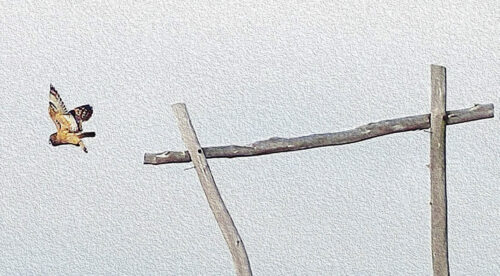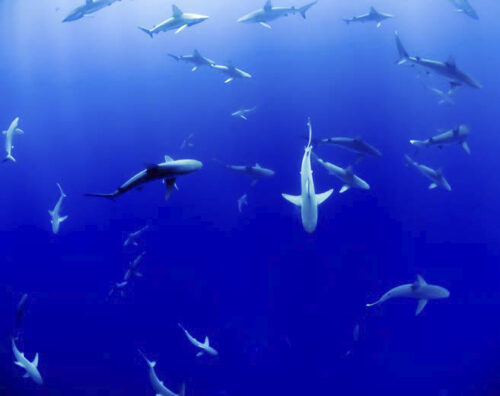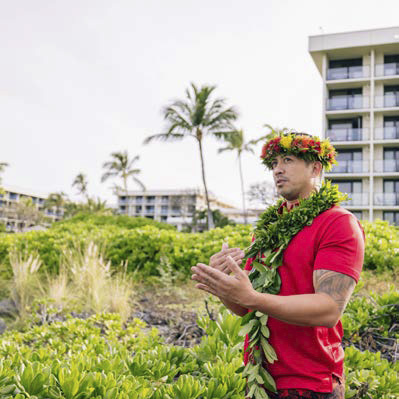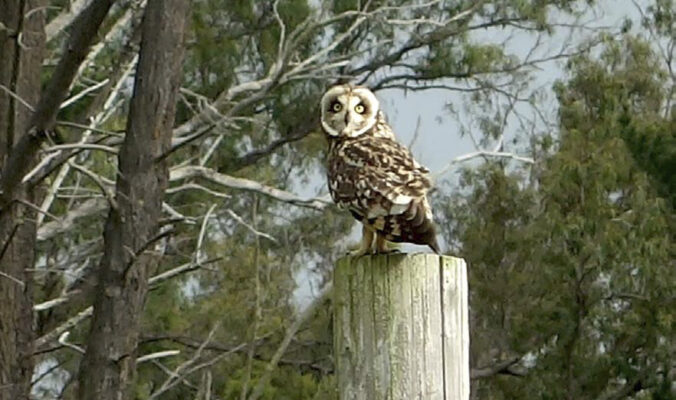 Many indigenous cultures across the world believe that animals have spiritual significance in our lives. In North America, for example, the Lakota people believed strongly that certain animals were conduits to the powers of the natural universe and that those powers could be called upon — for good fortune in battle or agriculture, for example — through chant and ceremony.
Many indigenous cultures across the world believe that animals have spiritual significance in our lives. In North America, for example, the Lakota people believed strongly that certain animals were conduits to the powers of the natural universe and that those powers could be called upon — for good fortune in battle or agriculture, for example — through chant and ceremony.
Observance of animal behavior was also incorporated into everyday life, creating a belief system that protected all who sought their powers. All animals, they felt, can teach us about life, and we can learn lessons from them by observing closely. The Lakota people learned from childhood that all beings depend on one another or perish and there are lessons to be learned from all forms of life.
In some cultures, animals symbolize the values and spiritual beliefs of these indigenous communities. Animals also figure significantly in the creation stories of many tribes. The coyote, the wolf, the buffalo, the eagle … are all found deeply rooted in these cultures.
In Hawaiʻi, guardian animal relationships are called ʻaumakua. “Hawaiians believe that their loved ones who have passed take on the form of an ʻaumakua,” says Bambi Lau, human resources manager and “magic maker” at Waikoloa Beach Marriott Resort & Spa, who has experienced the protection of her family ʻaumakua personally. “It’s believed that the ʻaumakua are there to guide and protect their family members.”
The word ʻaumakua means “ancestor gods” and is derived from the Hawaiian words au which means period of time, and makua meaning parent or ancestor. (Makua is also the word for the traditional Hawaiian fishhook, another cultural symbol.) As ʻaumakua, deceased family members would thus watch over their descendants, warn them of misfortune and help guide them from trouble. Many families recognize multiple ʻaumakua, including the Hawaiian hawk (io), the lizard (moʻo), the shark (mano) and the owl (pueo).
 Lau, whose family claims as ʻaumakua the pueo, the mano and the moʻo, tells of an incident where her guardian animal helped protect her from an accident. “On one occasion,” she says, “while driving late at night, I was falling asleep at the wheel. A pueo flew in front of my car which caused me to jump in my seat. I then realized that it was my ʻaumakua giving me a warning.”
Lau, whose family claims as ʻaumakua the pueo, the mano and the moʻo, tells of an incident where her guardian animal helped protect her from an accident. “On one occasion,” she says, “while driving late at night, I was falling asleep at the wheel. A pueo flew in front of my car which caused me to jump in my seat. I then realized that it was my ʻaumakua giving me a warning.”
“Most of what we think of as ʻaumakua are from much earlier times, when the traditional religion was active,” Hokulani Holt, an expert in Hawaiian language and culture, a master kumu hula (hula teacher) and a cultural practitioner, told Maui No Ka Oi magazine in 2010. “When the traditional religion was overthrown [in 1819], the practices relating to ʻaumakua went with it.
“Everyone had at least one ʻaumakua.” she adds. “If you married and had children, their [ancestors] on both sides would come into the genealogy. They’re family; they stay with the family for generations.”
Hawaiian-born actor Jason Momoa has a shark tattoo on his left forearm that is a tribute to his family ʻaumakua. Some families had many ʻaumakua. It is said the family of respected elder, Hawaiian scholar and author of Folktales of Hawaiʻi, Mary Kawena Pukui (1895-1986), had at least 50 known ʻaumakua.
According to Holt, “Often the form an ʻaumakua would take depended on where family members lived and how they earned their livelihood. If you were ocean people, it would be good to have a shark as an ʻaumakua. If you were mountain people, pueo, ʻio [Hawaiian hawk] … birds would be helpful. If you were Pele people, the form your ʻaumakua took might be related to lava. The form was a way of placing you within the family, within society and within nature.”
“ʻAumakua work differently for different families,” concludes Lau. And while some traditional practices have eroded over time, the belief in family guardians in Hawaiʻi still seems to be going strong today.
Most Common ʻamakua in Hawaiian Lore:
- ʻalalā – crow
- heʻe – octopus
- io – Hawaiian hawk
- ʻiole liʻiliʻi – small field mice
- manō – shark
- mea kanu – plant
- moa wahine – mud hen
- moʻo – lizard
- peʻelua – caterpillars
- pōhaku – rock
- pueo – a species of short-eared owl P puhi – eel
According to some beliefs, ʻaumakua were able to take on many bodies and many forms, and they could change back and forth at will.
Hoʻokupu Initiative Flourishes
 Over the past six months, 43 species of native Hawaiian plants have been sprouting around Waikoloa Beach Marriott Resort & Spa’s grounds as part of the Hoʻokupu Initiative. The new plant conservation and restoration program is centered around cultivating endangered, indigenous and endemic plants; activating regenerative tourism efforts; and fostering cultural preservation.
Over the past six months, 43 species of native Hawaiian plants have been sprouting around Waikoloa Beach Marriott Resort & Spa’s grounds as part of the Hoʻokupu Initiative. The new plant conservation and restoration program is centered around cultivating endangered, indigenous and endemic plants; activating regenerative tourism efforts; and fostering cultural preservation.
The Hoʻokupu Initiative is run by the resort’s cultural coordinator Bryson “Lanakila” DiPrete and environmental team.
“Hoʻokupu translated means an offering, a tribute, or to cause to grow,” says DiPrete. “Our resort has replaced much of the invasive plant life with endemic varieties that make sense — some are plants that once existed in this landscape but have long been overrun by development and invasive species.”
Among the native plants blooming at the Waikoloa Beach Marriott Resort are ʻAhuʻawa, ʻAkala, ʻOlena, Akia, Aweoweo, Hinahina Ku Kaha Kai, Ilieʻe and Kokio Keʻokeʻo. Guests, visitors and residents can tour the gardens and help maintain the plants during the Native Hawaiian Garden Experience Activity twice a week.
“We’re moving beyond commercial Hawaiian activities and literally getting our hands dirty,” says DiPrete. “It’s an opportunity for guests and the local community to participate in native Hawaiian plant conservation and restoration in an accessible environment. The goal is to incorporate responsible experiences that allow guests to leave Hawaiʻi better than they found it.”
Dolphin Sunrise Splash
Witness the joy of the dolphin ohana frolicking at sunrise in the expansive, open-to-the-ocean saltwater lagoon at Hilton Waikoloa Village. Learn about these spectacular animals while watching them up close and personal with a marine mammal specialist. Bring your camera to capture this unique experience. Sessions typically last for about 10 minutes. Tuesday, Thursday and Saturday at 8 am at the Saltwater Lagoon.

